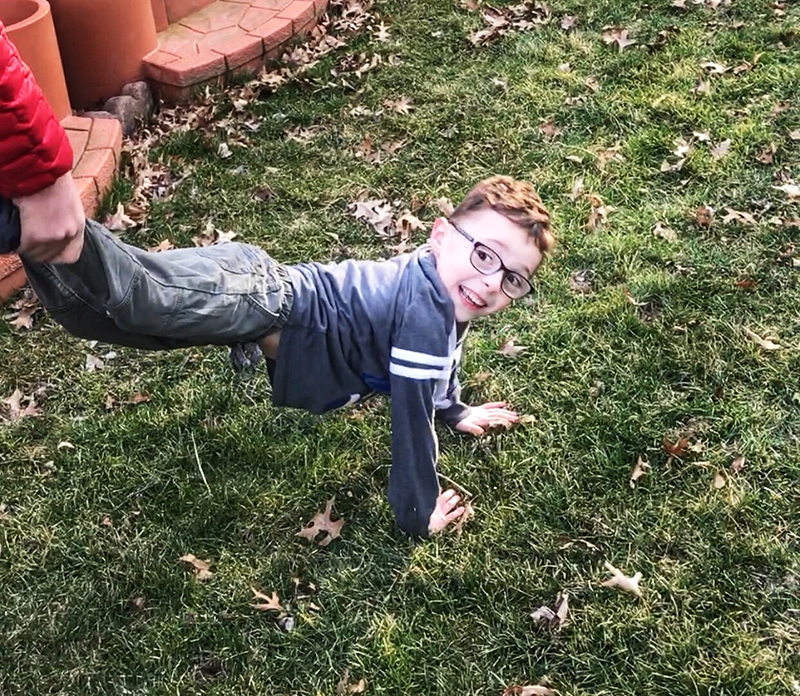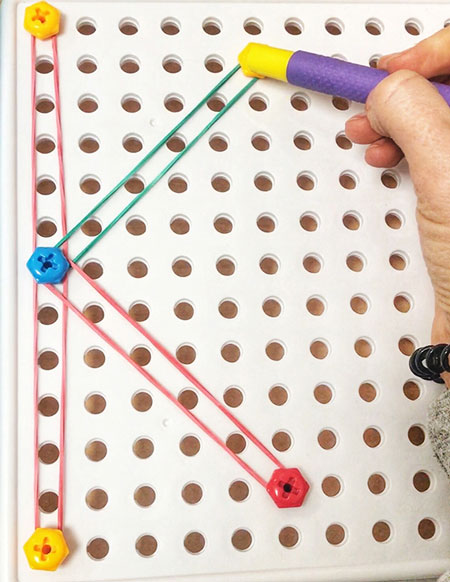The Benefits of Vibration
Posted by Guest Blogger Katie Zelinski, MS, OTR/L on 2nd Mar 2020
This informative guest blog comes to us occupational therapist Katie Zelinski from The Well Balanced OT.
Prior to Occupational Therapy school I had no idea how powerful, and useful, vibration was. I knew when I held a drill, my hands felt all tingly after. I knew that brushing with a vibrating toothbrush was great for oral-health (and made my teeth feel super clean). The hand-tingling type may not be therapeutic, but gentle vibration can target multiple areas of function including motor, emotional regulation, and sensory.
Understanding the underlying Neuroscience:
When vibration is applied to the body, the Dorsal Column Medial Lemniscus (DCML) pathway carries the sensation from the peripheral nerves ultimately to the primary somatosensory cortex in the parietal lobe. For an in-depth look, check out this 2 minute video. The brain processes the sensory input, then sends a motor signal down to the muscles to react. The transmission of information allows us to register sensory signals from the environment or our body, interpret them, and then respond motorically. This transmission of information is not always functioning at its best. As a pediatric Occupational Therapist, I use vibration as a tool to target the somatosensory system which might be dysfunctional, most often from nerve damage (Brachial Plexus injury), Autism or sensory dysfunction.
Here are just some of the ways vibration can be beneficial:
Vibration can be alerting! If I am working with a child who has a very low arousal (flat affect, sluggish, poor posture), I want to give their sensory system some excitatory input to wake them up. Providing full body or targeted vibration along with vestibular input can bring those children into a “just right” state where they can pay attention in order to learn new skills, engage with others and use their bodies safely.
Vibration can turn on our muscles. Many of our “low tone” clients have the muscles to support their skeleton system, but they don’t know how to activate them appropriately. When vibration is applied, their muscles are turned on by targeting the proprioceptive system found in the deep muscles and joints. The more frequently we activate those muscles, the more we train their brain to do so independently.
Vibration can calm our body. As stated above, vibration targets the proprioceptive system. This system is one of the most calming sensory systems we have. If you’ve never been exposed to heavy work, it’s when we engage in resistive activities (think pushing, pulling, hanging, etc.) that provide traction and compression to our joints, to stimulate our proprioceptive system. We often recommend heavy work for our sensory seekers who need a lot of input prior to meeting their sensory threshold. Vibration is able to provide similar input without all of the movement.
.
 Wheel barrow walking compresses our upper extremity joints and is a great example of heavy work.
Wheel barrow walking compresses our upper extremity joints and is a great example of heavy work..
Vibration can decrease spasticity. It has been found that using whole-body vibration on individuals with spasticity (often found with Cerebral Palsy) can actually improve their overall tone and relax their typically flexed body position.
Vibration can desensitize a sensitive tactile system. Many of the children I work with are tactilely defensive. They don’t enjoy messy play or how some clothing feels on their body. When they register the tactile input, they have an over-reactive or fearful response due to being unable to inhibit the stimuli. They may also avoid interacting with anything that causes distress, which can be pretty challenging when it comes to clothing. Since the DCML carries light/deep touch and proprioceptive stimuli in addition to vibration, providing one form of input can inhibit the others. So if the tactile system is very sensitive, providing vibration can help quiet the messages being sent to the brain about messy play.
Vibration can improve body awareness. Like we learned earlier, our proprioceptive system lives in our deep muscles and joints and helps us identify where our body is in space. It contributes to skilled motor movement and helps us navigate our environment without bumping into things. Each time our body moves, our brain is learning. It’s figuring out if it needs to reach further next time or if it needs to twist harder when turning a door knob. Since vibration alerts our brain to where it is applied, it increases our awareness of that body part.
I utilize vibration with children who have a brachial plexus injury (stretched or torn nerves impacting motor and sensory function) to provide input to the affected side to increase awareness. For example, I run the Z-Vibe with an attachment (a massager will work just as well here) from the shoulder to fingers, starting with the non-impaired side which has intact sensation/motor, and then continuing with the impaired side. For children with poor hand awareness, I use the Z-Vibe to “draw” lines from the palm to fingertips of each digit (starting with the pinky and moving towards the thumb for typical developmental sequence). When a child is learning the alphabet, I may have them trace the letters with the Z-Vibe to improve motor memory of the letter sequence (see picture below).
.

.
Vibration is used daily in my practice and have seen tremendous improvements for my clients. Every child (and their sensory system) is unique in his or her own way, and not all will enjoy vibration.
There are many vibration therapy benefits. Please check with your Occupational Therapist to learn how you can incorporate it with your child, and to make a plan for frequency and duration.
Katie Zelinski
Katie Zelinski graduated from New York University with a Masters in Occupational Therapy. She currently lives in Cleveland, Ohio. She has additional training in Ayres Sensory Integration, S.O.S., feeding, reflex integration, and iLs programs.
Follow Katie on Instagram @the.well.balanced.OT or visit her website at www.TheWellBalancedOT.com.
.


